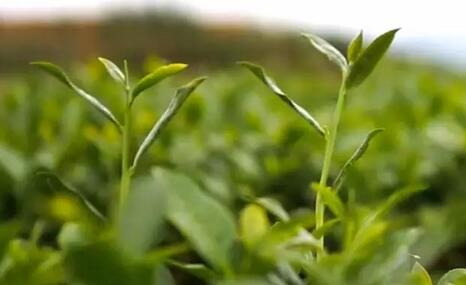What is autumn tea?
Autumn climate conditions are between spring and summer. After growing and being harvested in spring and summer, the new shoots of tea trees contain relatively fewer substances, with yellower leaves, thinner and smaller buds, uneven sizes, more opposing leaves, thinner leaf blades, and obvious serrated edges. The content of internal substances is less, resulting in a mild taste, light sweetness, and a higher aroma.
Autumn tea is not as tender and short-lasting as spring tea, nor as dry and bitter as summer tea. Instead, it has a unique mellow flavor, which is why seasoned tea drinkers particularly enjoy it.
If spring tea is appreciated for its fresh aroma and light grassy flavor, then autumn tea is enjoyed for its rich and robust taste. After enduring the summer, the tea leaves seem to have developed their most intense character over time. The autumn climate, marked by clear skies and less rain, produces tea with a long-lasting, fragrant aroma and a sweet, smooth taste.

What is the difference between autumn tea and spring tea?
The biggest difference between autumn tea and spring tea lies in the taste. Autumn tea is neither astringent nor bitter, with each leaf carrying the dew, making it a premium product. For the same quality, spring tea has better endurance and is more brew-resistant, while autumn tea has a superior aroma and lasting aftertaste. "Spring water, autumn fragrance"—spring tea is known for its rich broth, strong flavor, excellent taste, and long aftertaste, while autumn tea is prized for its high aroma and lingering charm. Which is better is hard to say, as it largely depends on personal preference.

How to drink autumn tea properly?
Tea drinking varies with seasons, regions, and climates, so choosing the right tea is important. As autumn arrives, how should we adjust our tea-drinking habits? How can we drink autumn tea in a way that promotes health?
In autumn, the climate is dry, and residual heat lingers, causing dry mouth and lips, which traditional Chinese medicine calls "autumn dryness." During this season, it is best to drink Oolong tea, a type of green tea. Green tea falls between green tea and black tea, combining the fresh fragrance and natural floral aroma of green tea with the mellow taste of black tea. It is neither too cold nor too hot, perfectly moderate, and helps moisturize the skin and throat, promote saliva production, clear internal heat, and help the body adapt to seasonal changes. At this time, as Tieguanyin autumn tea hits the market, drinking it is the top choice for health preservation.